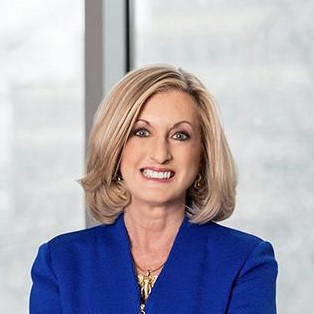Earlier this year, CEP released Policy Influence: What Foundations are Doing and Why, a report that sheds light on how foundations think about and approach their efforts to influence public policy. The research finds, among other things, that the primary way foundations pursue their policy agenda is through grantmaking; almost three fourths of foundations that engage in policy work support grantees’ policy efforts.
To learn more about the experiences of grantees receiving support from foundations as they seek to influence policy, for this study CEP confidentially surveyed nonprofit leaders on CEP’s Grantee Voice panel — a nationally representative group of leaders of nonprofits that receive foundation funding. Leaders of more than 400 organizations on the panel shared their perspectives on this topic. One of those nonprofits is FARE (Food Allergy Research & Education), the leading food allergy patient advocacy organization and the world’s largest source of private funding for food allergy research.
In this post, FARE CEO Lisa Gable discusses the organization’s work advocating for policy solutions to the problems food allergies pose to tens of millions of Americans. CEP is pleased to highlight this example of how one nonprofit organization is engaging in advocacy to achieve its mission.
-CEP
Food allergy directly affects 32 million Americans, including 5.6 million children. This number expands nearly threefold to 85 million when you consider those with food intolerances and those indirectly impacted by this disease, like family members who live in accordance to the safety standards of their loved ones.
The prevalence of food allergies has increased dramatically in recent years, with medical procedures to treat severe reactions rising by 377 percent between 2007 and 2016. Every three minutes in the U.S., an allergic reaction to food sends someone to the emergency room. And though there is hope on the horizon, with an approved treatment for peanut allergy entering the market earlier this year, most food allergies still have no effective treatments. Patients must carefully avoid all contact with their problem foods and always carry epinephrine auto-injectors to treat severe reaction symptoms.
As chief executive officer of FARE (Food Allergy Research & Education), the leading food allergy patient advocacy organization and the world’s largest source of private funding for food allergy research, I am committed to facilitating conversations that can benefit food allergy patients and families. By serving as a bridge between food allergy households and those who can help them thrive, FARE seeks to: 1) improve patient access to care, accommodations, and products; while 2) highlighting opportunities for enduring relationships between a large, diverse, committed, and loyal patient community and industry leaders, regulators, lawmakers, healthcare providers, and researchers.
FARE’s main goal is to drive solutions — from research and treatment to access and affordability — for food allergy families across the country. To do this, it isn’t enough to just better understand the disease (for which there is no cure) and use that information to continue the discovery of treatments and therapeutics. We also need to build a coalition of partners who can collaborate and work together towards pragmatic and real-world solutions.
This includes government and regulatory agencies who have the unique ability, expertise, and power to actually transform the food allergy landscape. Our colleagues at the National Institutes of Health (NIH), the Food and Drug Administration (FDA), and the Centers for Disease Control and Prevention (CDC), along with our elected leaders in Congress, are essential to achieving our goals to scale best practices for the entire universe of individuals suffering with food allergies. We work closely with these groups on clinical trials, drug development, labeling laws, and so much more. While we may not always agree, we see our work on and off Capitol Hill as a key component to our support of the food allergy community.
Here’s an example. Earlier this year, 150 food allergy advocates from across the country joined FARE on Capitol Hill to push for plain-language labeling of sesame ingredients on packaged foods, and for much-needed federal funding for research to speed the development of effective food allergy treatments. FARE hosted this fly-in event to raise awareness among federal legislators and to encourage lawmakers to co-sponsor the Food Allergy Safety, Treatment, Education & Research (FASTER) Act, which was introduced in the House of Representatives in 2019.
In the months preceding the fly-in, we built momentum for the FASTER Act by harnessing the passion of the food allergy families whose lives the bill would improve. We brought together members of Congress from both sides of the aisle along with constituents — primarily parents dedicated to protecting their children and young people learning to navigate a world in which everyone else’s sustenance is their poison. Despite the pandemic-related delays, we are making progress in adding truly bipartisan co-sponsors for the bill, since food allergy knows no party and impacts every region of the country.
Our efforts in March ushered forward 14 new FASTER Act co-sponsors for the House bill, as well as the introduction of a companion bill in the Senate (S. 3451) just one week following our meetings on the Hill. We were poised to help move the bill forward. And then the pandemic set in. But despite shutdowns across the country, when states began to reopen, the House added the FASTER Act, H.R. 2117, to its schedule for mark-up and saw the bill voted out of the Energy and Commerce Committee in mid-July. Our momentum continues.
I look at photos of our advocates on the steps of the Capitol with pride, but also with amazement at everyone standing so close together. Seemingly overnight, all our efforts shifted to online communications and virtual events. In this unprecedented year, the path forward is more complex than it was four months ago. Nonetheless, we continue to advocate for the FASTER Act, which has reached 92 co-sponsors in the House.
At the same time, our community is encountering new challenges in every facet of food allergy management — from temporary guidance from the FDA that relaxes labeling requirements (creating more anxiety as people struggle to feel confident that a food is safe for them to eat), to changes in how food will be managed in classrooms as the CDC offers recommendations for the reopening of schools this fall. In each of these instances, we continue to serve as a bridge between our patient community and the many institutions on which they rely to stay safe.
Despite all the unknowns, one thing remains clear and consistent: the dedication of our community and the tenacity of our colleagues. Whether it’s our corporate partners, medical researchers, advocates, support group leaders, or donors, there has been no pause for the food allergy community in its efforts to improve reality for 32 million Americans living each day with this disease. The goal to cure food allergies remains front and center, and perhaps that alone showcases the unique resilience of our community. For that we continue to march forward together.
Lisa Gable is chief executive officer of FARE (Food Allergy Research & Education). Follow FARE on Twitter at @FoodAllergy.




